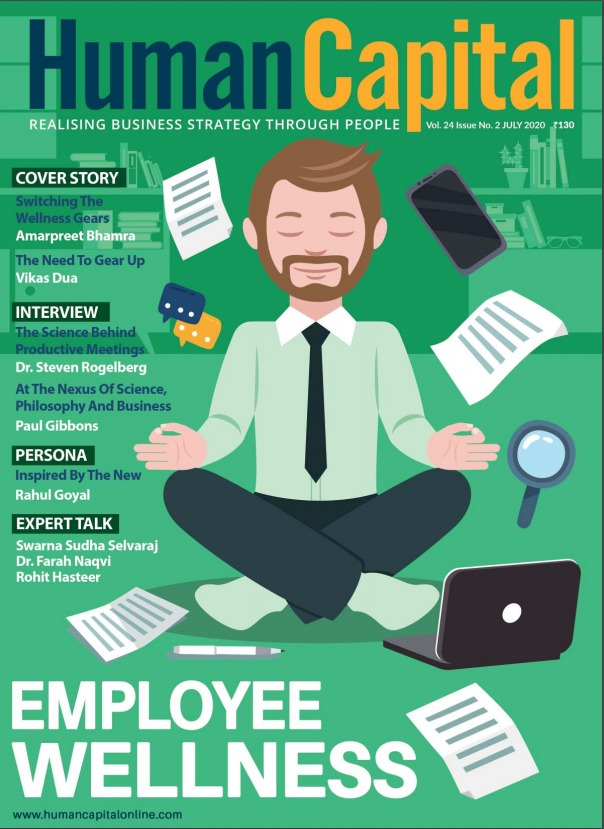Hybrid has been a way of life. However, the COVID-19 pandemic has made hybrid more interesting. And the Gig workforce has caught the eye of companies operating with a regular workforce.
She asked, “Shouldn’t we buy an electric car?”
He asked “Why?”
She said, “Electric cars are the future. They are good for the environment and their running cost is one-sixth of a petrol car.”
He replied, “You are right… but the ecosystem is not ready for electric cars. There are not enough charging stations.”
She said, “In that case, we should have the best of both worlds. Let’s go hybrid!!”
Whenever we witness things changing, we are forced to make a choice. We prefer to go hybrid first! Hybrid allows us to reap the benefits of the future too since it mitigates the risks that may be associated with it. Hybrid is not popular among car buyers alone. It has recently emerged as the new buzzword in HR circles as well.
Is Hybrid New for HR?
The Hybrid workforce is not new for HR. Organisations have been managing hybrid workforce structures for long, engaging multiple workforce types for specific needs.
1. Regular workforce Regular workforce is of two types.
(a) Permanent workforce: This is the most popular workforce model adopted by organisations. This model offers security and benefits to employees. This was popularised by the government during the pre-liberalisation era. Private organisations adopted this model to compete with the government in order to attract talent. Ideally, this model is used for employees whose skill sets, as well as availability, is critical for the business in the long term. The model has variants, based on the length of employment and hours of engagement, for example, full-time, parttime, fixed-term employment etc.
(b) Temporary (Off-roll) workforce: Off-roll is the next most popular workforce model. The off-roll workforce is used for regular work of short durations. Seasonal surge in demand for sales, manufacturing, maintenance, operations, logistics etc. is handled through the off-roll workforce. These jobs require basic skills and continuity of service. In this case, requirements such as hiring, onboarding, salary processing and compliance for the off-roll employees are taken care of by a third party agency.
2. Gig Workforce
Gig workforce is a no-obligation model where work is not regular. People may be engaged whenever work or a project comes along. This acts as a workforce of entrepreneurs. They are paid a fee for their services after the completion of the work assigned to them. If we go by this definition, there are three popular types of Gig workforce.
(a) Casual workforce: Casual labour is engaged when work is intermittent. Here, the availability of the same person is not critical. It is the immediate availability of a particular skill set when the need arises. This workforce is engaged through a labour contractor. In this case, work is defined and measured on an hourly basis. It is generally a day’s labour.
(b) Commission based workforce: In this case, work is defined and measured on the basis of the revenue generated. The commission for the workforce is also decided on this basis. The Life Insurance Corporation of India has been using over 1.5 million life insurance agents as a commission-based gig workforce. The only problem with this workforce model is that it is very difficult to continuously engage the workforce.
(c) Service-based workforce: In this case, work is defined and is measured upon the completion of the assigned service request. After the emergence of technology platforms, companies such as Uber, Airbnb, Swiggy and Urban company (also called platform organisations) are able to engage the gig force based on service transactions.
(d) Project-based workforce: In this case, the objective (project) is defined and is measured on the number of hours. They are generally termed as consultants and come with a specialised skill set. These contracts are costly and also sensitive in nature.
Hybrid has been a way of life. However, the COVID-19 pandemic made hybrid more interesting. And the Gig workforce has caught the eye of companies operating with a regular workforce. They have started to review whether they actually need so many people in their regular workforce.
The ‘Pandemic’ Effect
As the pandemic struck, Work from home became a necessity. Naturally, organisations transitioned from monitoring hours to job outcomes. This improved the efficiency of the organisations as well. A Mercer study of 800 employers revealed that 94% of employers experienced the same or greater productivity even when people started working remotely. This was named ‘the new normal’.
After a certain point, organisations realised that many of their employees wanted to come back to the office. Everyone underestimated the impact of ignoring the social and emotional needs of employees. As per the World Health Organisation, 93% of countries in the world reported disruption of mental health services due to increased demand. It began to reflect in the engagement levels. It was even harder for women employees who had the burden of managing both home and office. These were indications that it is a shifting normal, and will have to be tweaked before it becomes the new normal.
The New Hybrid
Organisations got a new dimension of hybrid due to the shifting normal. The workforce got divided into three segments based on their workplace.
1. Remote workforce: People who work from home (e.g. software programmers) or in the field (e.g. Drivers for cab aggregators like Uber) are remote workers. These are people who are not required to come to the office. It implies that they can work from their hometowns as well. Hence, talent acquisition no longer comes with location as a constraint. Remote workforce brings down the operational costs for the organisations. Organisations are still learning to manage work assignment, monitoring, social needs and engagement for them.
2. Facility workforce: Facility workers are people who are required to come to a facility to perform their duties (e.g. Nurses). This population requires office space, equipment to perform their duties, and other services like drinking water, food court/cafeteria and washrooms. Factors like hygiene, ergonomics, safety are also important for this population.
3. Hybrid workforce: Hybrid workers are those workers who need to work remotely and need to work from the office for some part of time (viz. clientfacing people). Many organisations plan to convert part of their remote workers into hybrid workers to deal with challenges of mental health.
Hybrid Myth
Many organisations that are trying to convert their remote workforce into hybrid workforce anticipating mental health issues must understand that a large part of mental health issues is owing to social distancing and movement constraints imposed by the pandemic. Once the pandemic is past (I strongly believe, it will be past) people will find ways to meet their social needs. Also, there are better ways to do it, like Uber makes use of a dedicated call centre for their drivers, crafting intelligent incentive plans and providing real-time customer feedback.
Organisations were already looking at the possibility of converting a part of their regular workforce into gig workforce to compete with platform based organisations. The Pandemic has changed the landscape and made HR’s job a lot easier. Now, HR only has to look at remote workforce jobs and explore the possibilities for converting them into a gig workforce.
Does your organisation support you in maintaining work-life boundaries?
Trending
-
SBI General Insurance Launches Digital Health Campaign
-
CredR Rolls Out 'Life Happens' Leave For Its Employees
-
Meesho Announces 30-Week Gender-Neutral Parental Leave Policy
-
Microsoft Unveils Tech Resilience Curriculum To Foster An Inclusive Future
-
60% Indian Professionals Looking For Job Change Due To COVID: Survey
-
SpringPeople And Siemens Collaborate For Digital Transformation Push
-
86% Professionals Believe Hybrid Work Is Essential For Work Life Balance: Report
-
Almost 1 In Every 3 People's Personal Life Affected Due To Work Stress
-
Meesho Rolls Out Reset And Recharge Policy For Employees
-
80% Of Talent Leaders & Academics Say Pandemic Changed Skill Needs For Youth: Report
-
Hero Electric Rolls Out 'Hero Care' Program For Employees
-
Human Capital In Collaboration With ASSOCHAM Hosts Virtual Conference
-
IKEA India, Tata STRIVE Collaborate To Create Employability And Entrepreneurship Opportunities
-
SAP India, Microsoft Launch Tech Skilling Program for Young Women
-
DXC Technology, NASSCOM Collaborate For Employability Skills Program
-
Lenskart To Hire Over 2000 Employees Across India By 2022
-
Mindtree Launches Learn-and-Earn Program
-
Tata AIA Extends 'Raksha Ka Teeka' To Its Employees
-
Swadesh Behera Is The New CPO Of Titan
-
NetConnect Global Plans To Recruit 5000 Tech Professionals In India
-
Hubhopper Plans To Hire 60% Of Indian Podcasters By 2022
-
Corporate India Needs More Women In Leadership Roles: Report
-
Aon to Invest $30 Million and Create 10,000 Apprenticeships by 2030
-
Tech Mahindra Launches ‘Gift a Career’ Initiative for Upskilling of Youth
-
40% Women Prefer Flexible Working Options in Post-COVID World: Survey
-
3 out of 4 companies believe they can effectively hire employees virtually: Report
-
Vodafone , CGI and NASSCOM Foundation launch digital skills platform
-
Odisha: Bank, postal employees to deliver cash for elderly, differently-abled persons
-
Skill India launches AI-based digital platform for "Skilled Workforce"
-
Hiring activity declines 6.73% in first quarter: Survey
-
70% startups impacted by COVID-19 pandemic
-
Bajaj Allianz Life ropes in Santanu Banerjee as CHRO
-
Over 70 Percent MSMEs look at cutting jobs to sustain businesses
-
93 Per Cent employees stressed about returning to office post-lockdown
-
Johnson & Johnson India announces family benefits for same gender partners
-
Indian firms turning friendly towards working mothers
-
Welspun India names Rajendra Mehta as new CHRO
-
Wipro partners with NASSCOM to launch Future Skills platform



Human Capital is niche media organisation for HR and Corporate. Our aim is to create an outstanding user experience for all our clients, readers, employers and employees through inspiring, industry-leading content pieces in the form of case studies, analysis, expert reports, authored articles and blogs. We cover topics such as talent acquisition, learning and development, diversity and inclusion, leadership, compensation, recruitment and many more.
Subscribe Now












































Comment